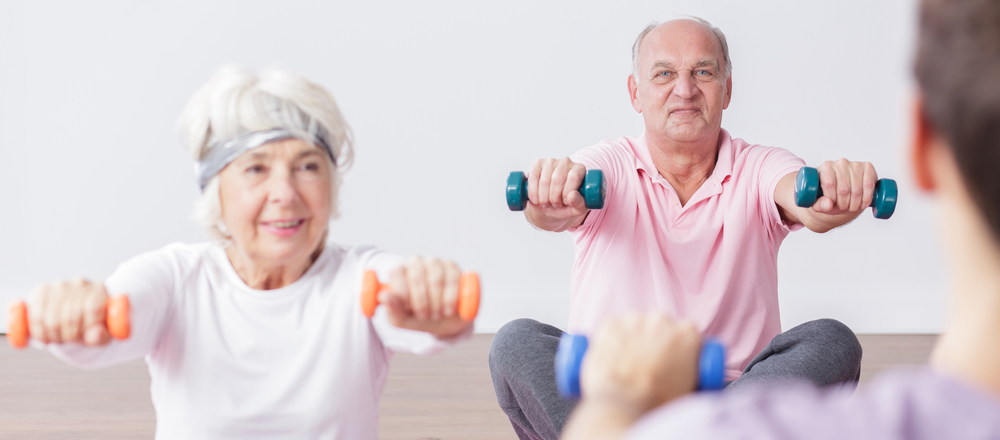If you haven’t made exercise a regular part of your life by the time you’re 60, you may think it’s too late. Many people associate aging with physical decline, which can make it difficult to exercise. In reality, physical decline is a byproduct of not being active on a regular basis. And far from being too late to get started, adults over 60 actually stand to gain even more benefits from exercise than younger adults!
Regular physical activity lowers your risk for almost every chronic illness, including diabetes, heart disease, obesity, and strokes. Exercise has also been proven to slow mental decline, improve mood, and increase your body’s ability to recover from injury or surgery. Increased strength and dexterity reduce the risk of falls, which are a leading preventable cause of senior hospital visits.
With all these potential benefits, what’s stopping you?
5 Simple Steps to Start Exercising After 60
- Get Approval
Before you start any kind of exercise program, it’s important to get clearance from your doctor. Check with your physician to make sure they don’t have any concerns about you participating in certain forms of exercise. Take any advice they offer seriously. A sudden change in activity level can be dangerous if you have a heart condition or joint problems.
- Start Small
If exercise hasn’t been a regular part of your life, you’re not going to jump up off the couch and head off running down the block. Assess your physical fitness level to determine an appropriate starting point. Without knowing your baseline, it’s easy to overdo it and cause an injury. Take it slow and work up to a more strenuous routine.
- Consistency Over Intensity
You don’t need to run marathons to gain the benefits of regular physical activity. Even a daily walk is enough to see improvements in your overall health. The key to establishing an exercise routine at any stage in life is picking something that you can commit to doing consistently. Find something you enjoy and exercise won’t seem like such a chore.
- Work With a Trainer
A physical trainer can help you set realistic goals, find exercises that fit your body and limitations, and practice exercise safely. For example, lifting weights without proper training and guidance can risk injury. ABHM’s staff of physical therapists and trainers will work with you to design a customized fitness program that will help you reach your goals.
- Know When to Stop
When you push your body beyond what it’s used to, it’s normal to feel some soreness and discomfort. However, if you experience pain or illness during a workout, that’s a signal from your body that you should stop and rest or slow down. Warning signs include chest pain or pressure, dizziness, nausea, cold sweat, sharp joint pain, and racing or irregular heartbeat.
With spring in the air and summer on the way, now is the perfect time to start a new exercise routine. There’s almost nothing better for your mental and physical health than spending time outside moving your body, so get out there and go!

Comments are closed.